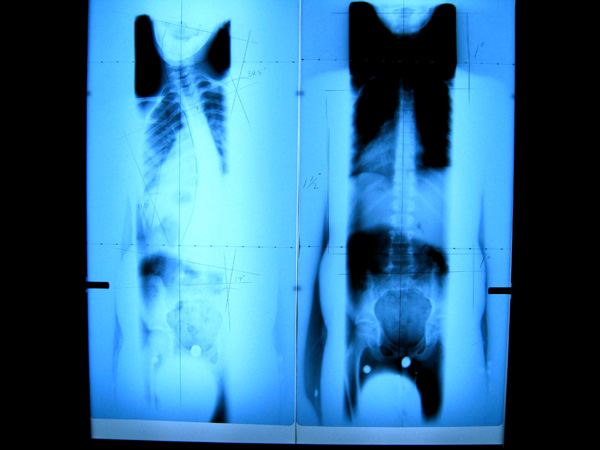Hi. I’m Dr. Steven Battaglino with Battaglino Chiropractic, and I want to talk about ribs for a minute. A lot of people complain that they have a rib out. It’s kind of a new term that more and more people are aware of and probably because they’re kind of painful when they go out of place. I’ll explain why they go out of place and what to do about it.
You can see this spine. This is a scoliosis patient, so this is not the average spine. Normally we would want to see the spine more straight up and down. But scoliosis is a good visual aid to kind of show what ribs do, because when the spine is out of place, whether it’s one or two areas that are out of place or more of a global curve, it takes the ribs along with it because the ribs are connected at the vertebrae in between. So, when they’re out of place, it kind of pushes the rib out of place as well. The ribs go right underneath your shoulder blades in the back. They’re supposed to go right underneath like that. When one or two of them are kind of popped up, it puts pressure on the shoulder blade, or it can be on the rib itself or on tissue in between the ribs. But ribs have a lot of nerves going to them. They actually have a dual layer of innervation or nerves because it’s such an important part of your body. If you think about it, it’s kind of like your armor. All your vital organs other than your brain are kind of protected in there, inside your rib cage. So if there’s an injury there, your body needs to know about it right away. And so there’s a lot of nerves going there. The bottom line is, there’s going to be a lot of pain though, even if they get out of place a little bit.
They key is checking out the source. They very, very rarely go out of place on their own. They sort of get taken for a ride because the spine is out of place. So we need to figure out why it’s doing what it’s doing. So in this scenario, let’s say this rib right here is bothersome. We need to fix it, but in order to do so, we really need to see what’s going on and why it’s doing what it’s doing. So by addressing and correcting the spine structurally at this level, we’ll be able to have an effect on that rib out here.
This is Dr. Steve Battaglino with Battaglino Family Chiropractic, urging you to come and get your spine and your overall body structure checked out by a qualified chiropractor that can take care of your ribs, too.

